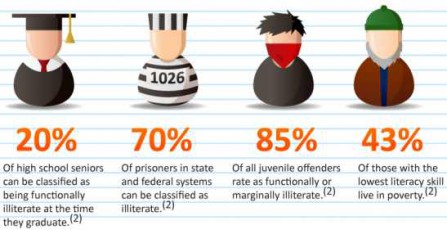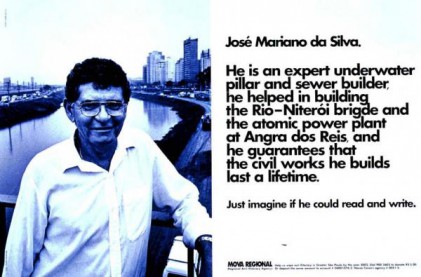ANNA
DAVID
On analphabism:
Make something for the people that have this.
So they can now ‚read’ the book without any writing.
Moving on:
Questions now:
—> What is our communication language?
—> Go back to the basics of language!
—> How can we work with pictograms.
—> Photography
—> Multilayer
—> Create the system
—> We have to find their problems and solve that
—> Newspaper (here you show people who can’t read to show what it is if you can’t read)
Steps:
1: Find the problem. For instance with talking to these people.
2: Work on the system to solve these
—> Colors
—> Pictograms
—> Music
Replacing imagination and mind set.
How can we tell the story in a still image.
Interview these people.
They can’t write it down so they have to remember things.
Information decoration (data visualization in the public domain)



Question for the interview:
1: Wat is een probleem waar je dagelijks tegenaan loopt?
(What is a daily problem for you?)
2: Hoe ga jij met bepaalde situaties om? (b.v. het nemen van openbaar vervoer)
(Hoe do you handle certain situations? (for instance public transport)
3: Is er een manier hoe jij graag wegwijzing zonder tekst zou willen zien?
(Is there a way you would like to see roadsigns or things without any text?)
4: Zie je onderscheid in letters?
(Do you see the difference between letters?)
5: Wat voor gevoel heb krijg je soms als analfabist (b.v. eenzaam, verloren, onbegrepen)
(What feeling do you have sometimes about being illiterate? (lonely, lost, not understood)
http://www.disambiguity.com/designing-for-illiteracy/
Planning:
Week 1 —> Research
Wednesday 4 December —> Get out research together and proceed in a way of form.
Before christmas we have started on designing.
-> Focus on both ways of making and show each other frequently and see how to incorporate each others work.
http://www.kikk.be/2013/
This was a digital media conference with a lot interesting interactive mediums.
https://vimeo.com/57842724#
- Braille ABC
- embossed shapes / textures could be interesting in a book
- morse / rythm
http://www.jnd.org/dn.mss/emotion_design_at.html
EMOTION & DESIGN
Colors
- yellow & black = danger
- instict the fastest and most effective decoding
-» future way of communication
-» based on human experiments
-» worldwide
-» don't have to be learned
-» solution for the illiteracy
- same as telepathy or mind-reading
- association
- symbols from tales and ancient stories
http://theinspirationroom.com/daily/2013/anlci-fight-for-literacy/
http://www.zumtobelgroup.com/geschaeftsbericht/2012/kunstbuch/
VISUAL
Waar lopen laaggeletterden tegenaan?
Op het werk hebben laaggeletterden moeite met het:
- invullen van formulieren ;
- e-mailen;
- schriftelijk rapporteren;
- lezen van veiligheidsinstructies;
- lezen van een memo.
In het dagelijkse leven hebben deze mensen bijvoorbeeld moeite met:
- invullen van formulieren zoals bijvoorbeeld voor zorgtoeslag, kinderopvang of huurtoeslag;
- lezen van straatnaamborden;
- voorlezen van (klein)kinderen;
- schrijven van een (verjaardags)kaart;
- geld opnemen bij een pinautomaat;
- opzoeken van vertrektijden van de trein ;
- schrijven van een klachtenbrief;
- lezen van recepten uit een kookboek;
- lezen en begrijpen van gezondheidstips, patiëntenfolders en bijsluiters van medicijnen.
http://lezenenschrijven.nl/algemeen/
http://www.doedemee.be/
100 ARTISTS, 100 POSTERS
100 CLASSIC NOVELS RE-COVERED.
100 book covers to fight illiteracy
posters, infographic about and against illiteracy
Smartphone alphabet for illiterate people
http://www.technologyreview.com/news/427376/designing-a-smart-phone-alphabet-for-the-illiterate/
4/12/13
Map of Mounira Al Sohl
A city guide in the low literacy:
The diary part
Trip of Lientje.
—-> Met at home, took the tram, changed trams because Lientje felled more safe in the other tram. Got out at central station. Askes a person who guided them with his left arm. When there was a bridge she felled uncertain. She asked another person and they had to go over the bridge.
Trip of Dirk.
—> Dirk guided them and was very confident. They took a bus which took them there directly. He showed confidence and hided the feeling of being lost.
Trip of Vera
—> Couldn’t read until her divorce. She would tell her children stories based on the pictures in the book. When her children started to read they noticed their mother was not telling the story as written in the book.
She preferred cash over pin.
They take a bus, she finds her way not by street names but for instance a snackbar or monument. She guided as if she was in a country without street names and didn’t count numbers.
Trip of Frits.
—> Can not read his own street name. He has his street name in his wallet and when he gets lost he shows it to the tram driver who help him. He wrote 142 on his hand He doesn’t like the number 1.
Creating a system to make life easier
Research:
http://www.behance.net/gallery/Black-Chronicle-of-Five-Centuries/3251461
http://www.pinterest.com/c_gyllestrand/signage-wayfinding/
The future is now.
Why look for a world without text if it already exists?
People who are illiterate are living in a no text world everyday.
Simple things like filling in forms, taking the bus and ordering from a menu are actions that most people do without thinking. How does the world look when you can not read text.